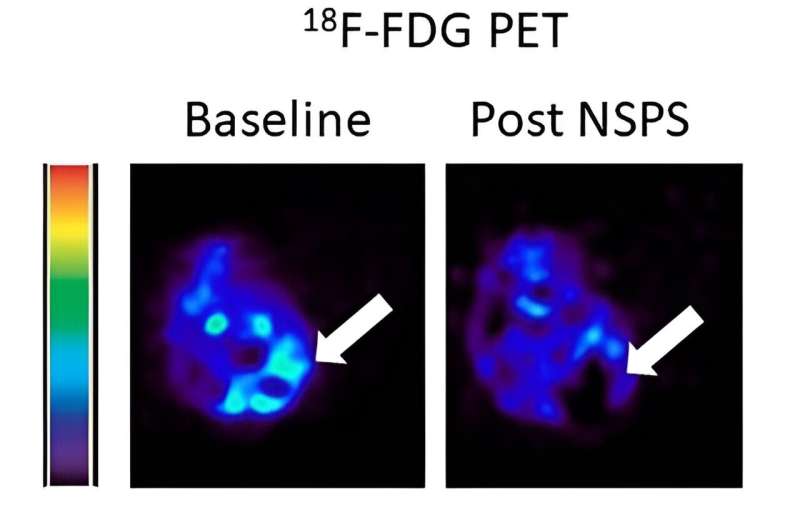
A multidisciplinary research team at Vanderbilt University and Vanderbilt University Medical Center has discovered a new way to kill a tumor by disrupting its acidic “microenvironment” without harming normal tissue.
The target of this unorthodox approach is hydroxyapatite (HAP), a naturally occurring mineral that is a major component of bone and teeth but is also produced by some tumors.
In the extracellular microenvironment that surrounds and nourishes tumors, HAP crystals can enhance tumor cell proliferation, progression, and migration (metastasis). However, HAP is absent in normal soft tissue, making it an attractive target for cancer imaging and treatment.
Using various molecular analytical methods, the researchers identified and synthesized a nanoparticle that, when delivered via an injectable solution called NSPS, chelated or bound to calcium on tumor-associated HAP crystals, causing them to dissolve.
Dissolution triggered localized alkalosis, a sudden reversal in the acidity of the tumor microenvironment that was strong enough to kill breast cancer cells grown in culture and to slow tumor growth in animal models of human breast, colon, lung, and prostate cancers.
At the same time, NSPS demonstrated limited interaction with normal soft tissue and bone, the researchers report in the journal Cancer Medicine. These findings suggest that NSPS may be, in their words, “a one-of-a-kind and first in a class of novel cancer therapeutics.”
The paper’s corresponding author, Mohammed Tantawy, Ph.D., MBA, is a research associate professor of Radiology & Radiological Sciences and a member of the Vanderbilt University Institute of Imaging Science at VUMC.
The microenvironment of tumors generally is more acidic than surrounding normal tissue. Acidity, by altering the structure or uptake of cancer drugs, may contribute to the resistance to chemotherapy exhibited by tumors such as triple-negative breast cancer, which has a high rate of recurrence and poor overall survival.
“There is an urgent clinical need for new treatment paradigms that could improve the outcome for cancer patients with poor prognosis,” the researchers noted. While further studies in humans are necessary, “NSPS has significant potential to be a paradigm-changing approach to the treatment of cancer patients with poor prognosis.”
Tantawy added, “Within the Institute of Imaging Science, we are fortunate to be able to take projects like this from initial conception through the development of novel ligands for detection and treatment of cancer into in vivo demonstrations based on multimodal imaging and even into human subjects.”
More information:
Mohammed N. Tantawy et al, Tumor therapy by targeting extracellular hydroxyapatite using novel drugs: A paradigm shift, Cancer Medicine (2024). DOI: 10.1002/cam4.6812
Provided by
Vanderbilt University
Citation:
Novel hydroxyapatite-targeting nanodrug may be a paradigm shift for cancer treatment (2024, February 9)
retrieved 12 February 2024
from https://phys.org/news/2024-02-hydroxyapatite-nanodrug-paradigm-shift-cancer.html
This document is subject to copyright. Apart from any fair dealing for the purpose of private study or research, no
part may be reproduced without the written permission. The content is provided for information purposes only.
